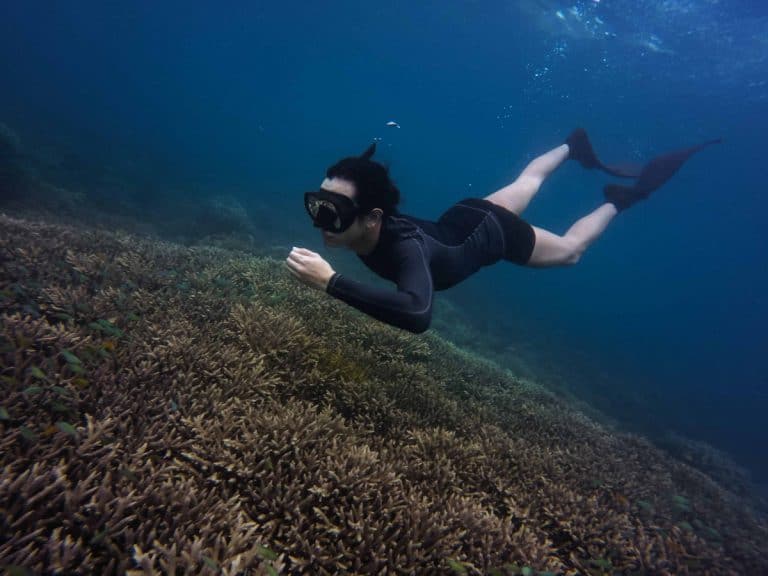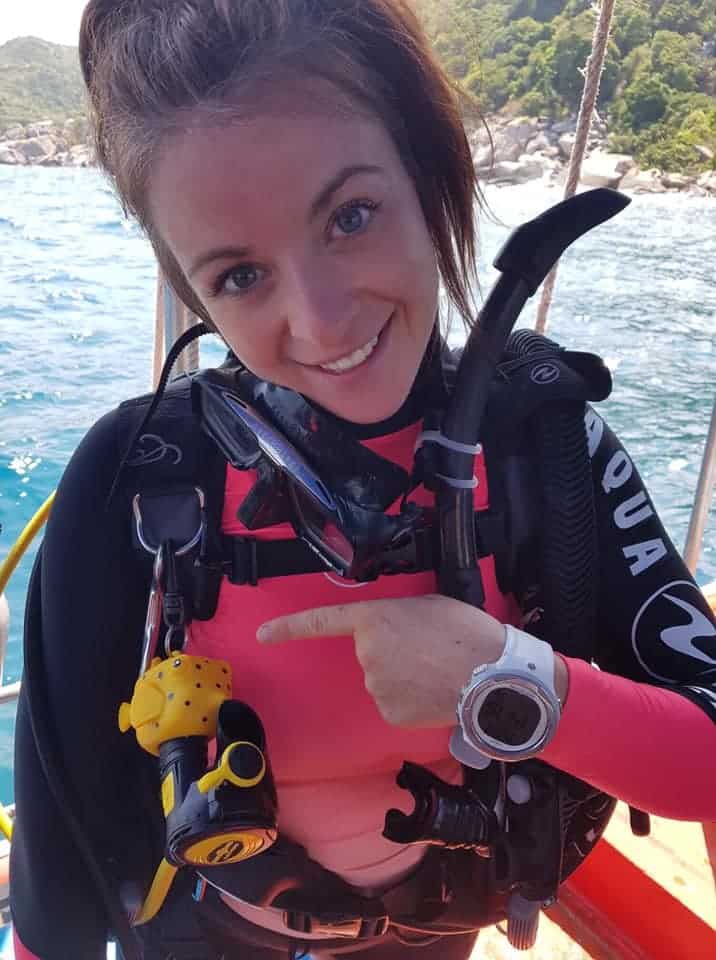Many people confuse the purpose of rash guards, thinking that they are there to keep you warm.
Although they can provide you with an extra layer of warmth their purpose is not to keep you warm.
But what do they actually do, and why is it so important to wear rashies while out and about in the deep? Can these Rash Guard layers keep you warm?
Rash guards have a much bigger purpose than merely keeping heat in, read on for my experience and advice..
Table of Contents
Do Rashguards Keep You Warm?
Rash guards do offer a little extra warmth providing you with an extra layer but their purpose is not to keep you warm. They will offer a wind barrier and prevent bouts of cold water hitting your skin.
If you want to stay warm then you will want a wetsuit. Rash guards are there for your protection from abrasives, the UV rays and they help prevent you from getting any rashes.
Normal 0 false false false EN-GB X-NONE X-NONE What Are Rash Guards?

Rash guards have a few different names, so don’t be surprised if you see them called skin-suits or rashies. They mainly help to protect your skin against anything that is likely to damage or irritate you. It’s essential dive wear for beginners and experienced divers alike.
You might want to upgrade to rash guards, for example, once you’ve spent some time exploring the waters. I seriously recommend investing in at least a good vest if you’re going to be diving a lot in new places or territories, or if you know you’re likely to come up against anything that could harm you.
Find all of the best rash guards using my complete guide.
Whats the Difference Between Rash Guards and Wetsuits?
Wetsuits are designed more to keep your warm and cosy while diving and swimming in deep waters. Not everywhere you may wish to dive is going to be warm and tropical. There will always be specific dive wear that is going to be more comfortable in specific conditions.
However, there’s a common misconception that rash guards purely act as protection against some of the more sensitive beasties of the deep. They actually do a little more than just protect your skin, meaning it may be worth you considering their benefits before picking out a basic wetsuit.

When Should You Use Rash Guards?
You can use rash guards on almost any diving expedition. In fact, you can actually safely wear them beneath a wetsuit or other swimwear if you’re likely to dive into colder waters. If you’re swimming somewhere tropical, you can go ahead and wear them on their own.
You should wear rash guards if you are concerned about diving or swimming anywhere particularly hazardous. For example, you may be diving into areas with plenty of jagged rocks and spiky landscapes – or, you might come up against a variety of creatures that are just trying to defend themselves.
You should also use rash guards if you want to protect your skin against the threats of UV. UV rays can be particularly damaging to skin long term, even while you are in the water for long periods. I really suggest you wear rash guards in all weathers, if possible, unless you really know the areas you are diving into and have been snorkelling for a longer time than most.
Even then, it’s always better to be safe than sorry – don’t you agree?
Do I Really Need Rash Guards?
That all depends on where and how often you dive. As mentioned, I think rash guards are fairly essential whether you’re swimming around in tropical depths or otherwise.
Here are a few circumstances where you might find you actually need rash guards as part of your swimwear to comfortably dive and snorkel around:
- If you are particularly sensitive to low temperatures they can help keep you slightly warmer. Depending on how your own body reacts to the cold water, you might find that you need a rash guard to give you that little bit of extra warmth. Or, if you find it too warm for a full wetsuit, you will likely find good rash guards to be a lighter option.
- If you are swimming into a largely populated habitat. These aren’t always easy to spot but do keep in mind that if there are any animals in the waters you dive and snorkel in, you may be at risk of a few stings and scrapes.
- If you are swimming or diving near rockery. Even the supplest of divers can find themselves getting knocked and scraped about through ragged rocks under the waves. The fact is the underwater landscape is often pretty hard to predict – so it makes sense to protect yourself as much as you possibly can.
- If you are a novice diver. Take it from me – when you first start diving, you are going to need all the help and support you can possibly get! That includes lining yourself up with the best clothing and accessories to support you in the water. A rash vest is a safe investment, meaning it’s worth shopping around for the best fit sooner rather than later. It provides sun protection for those sunny dives.
Can Rash Guards Protect You From Animals?

Dive wear such as rash guards can help to protect your skin from some of the hazardous creatures, but not all. Rash guards will largely help to protect you from shocks and stings, such as those you may get from jellyfish who feel you are swimming too close.
That’s because rash guards are nice and light in build, while still being extremely robust and protective. However, that doesn’t mean that they will protect against some of the other small animals in the water. For example, you likely won’t be protected well enough against spikes and stings from critters such as urchins, which can sometimes have a habit of floating around. Vigilance really is important in the water, regardless of where you dive and what you choose to wear while on your expeditions.
Are Rash Guards Loose or Tight?
This all depends on what you’re looking for in the right fit for your swimwear. Rash guards come in a variety of snugness levels, as well as in terms of numbers of pieces you’ll expect to wear, For example, you could choose to wear split rash guards if comfortable for you, or you might prefer a one piece instead.
The choice is yours, but there are different benefits to wearing tighter or looser rash guards in the water. A looser or baggier rash guard option, for example, is perfect for beginners. This is because it’s generally easier to breathe in and will likely help to keep things comfy if you are diving for long periods. That means they are also great picks for people who want to go on long diving excursions.
However, many experienced divers and snorkellers prefer tighter rash guards along with their wetsuits. This may be as a result of how they choose to navigate the water. For example, a tighter suit will be a more streamlined choice. This means you’re unlikely to get bogged down in the current, to slow down or to stumble along the way.
There is also the fact that baggier, looser rash guards can result in snags and catches. If you’re diving and swimming around plenty of rocks, for example, you might find that a baggier fit is less reliable for and will cause more harm to not only yourself, but the environment too.
Both tight and loose fits should keep you a little warm to a degree. However, tighter rash guards will keep you cosier if you are choosing to wear a wetsuit or similar gear over the top. In fact, it’s not normally a good idea to wear a loose guard underneath any kind of suit.
Things to Look for in the Best Rash Guards
There are plenty of things you should shop for when it comes to comparing and contrasting different rash vest options and guards available on the market. Here’s my shortlist of everything you should really be keeping an eye out for.
- Brand appeal. This doesn’t always mean that you’re going to get the best rash guards for your specific needs, but it does at least mean that you’re getting good quality material and durability. The last thing you will ever want to do is invest in clothing that’s going to fall apart at the first sign of water!
- Suit separation. As mentioned, you will find that some rash guards come in a one piece style, or as a separate top and leggings. Many divers find that separate leggings and tops are all the more comfortable, on the whole.
- Thermal protection. If you dive in the cold water then locking in the warmth is a big selling point for you, then consider thermal material and engineering as an absolute must. However, keep in mind that thermal-specific rash guards take a while to get all the water out of!
- Sleeve lengths. Yes – you can buy short sleeved or long sleeved rash guards. However, to me, this doesn’t make much sense – as you will surely want as much protection as you can muster from your guards! Cover up as much as you can with a long sleeve rash guard.
- Material quality. This can follow along with brand appeal, but not always. If you can, take a look at the material used in manufacture in person, if not, follow reviews from verified buyers wherever you can.
Conclusion
As you start getting more and more into your dives, you will likely find that rash guards become an absolute necessity. However, do make sure you shop around carefully for the best fits. They will keep you warm to an extent – but do match them up with wetsuits if you’re unsure! Always aim for a good sleeve rash guard as a top priority.
Many years ago we were short of such an array of choice but now you can pick from a whole range of rashguards. Enjoy the cold water or warm water with a rash guard sure to help keep you safe and comfortable during a scuba dive.
And, don’t forget to take a look at my top ten best ladies rash guards!

